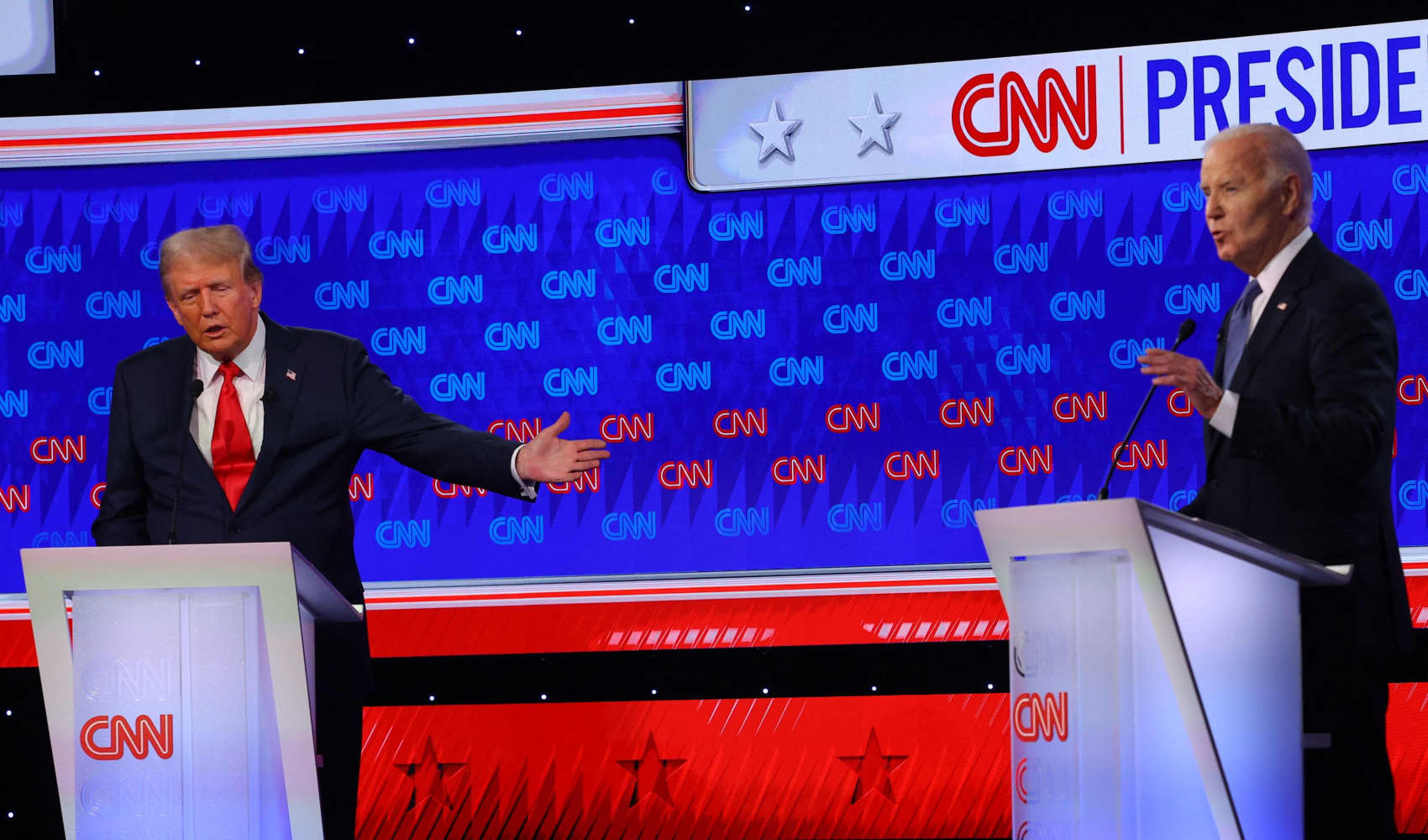
- The core personal consumption expenditures price index increased just a seasonally adjusted 0.1% for the month and was up 2.6% from a year ago.
- May marked the lowest annual rate since March 2021, which was the first time in this economic cycle that inflation topped the Fed's 2% target.
- Personal income rose 0.5% on the month, stronger than the 0.4% estimate. Consumer spending, however, increased 0.2%, weaker than the 0.3% forecast.
An important economic measure for the Federal Reserve showed Friday that inflation during May slowed to its lowest annual rate in more than three years.
The core personal consumption expenditures price index increased just a seasonally adjusted 0.1% for the month and was up 2.6% from a year ago, the latter number down 0.2 percentage point from the April level, according to a Commerce Department report.
Get Philly local news, weather forecasts, sports and entertainment stories to your inbox. Sign up for NBC Philadelphia newsletters.
Both numbers were in line with the Dow Jones estimates. May marked the lowest annual rate since March 2021, which was the first time in this economic cycle that inflation topped the Fed's 2% target.
Including food and energy, headline inflation was flat on the month and also up 2.6% on an annual basis. Those readings also were in line with expectations.

"It is just additional news that monetary policy is working, inflation is gradually cooling," San Francisco Fed President Mary Daly told CNBC's Andrew Ross Sorkin during a "Squawk Box" interview. "That's a relief for businesses and households who've been struggling with persistently high inflation. It's good news for how policy is working."
Money Report
The Fed focuses on the PCE inflation reading as opposed to the more widely followed consumer price index from the Labor Department's Bureau of Labor Statistics. PCE is a broader inflation measure and accounts for changes in consumer behavior, such as substituting their purchases when prices rise.
While the central bank officially follows headline PCE, officials generally stress the core reading as a better gauge of longer-term inflation trends.
Outside of the inflation numbers, the Bureau of Economic Analysis report showed that personal income rose 0.5% on the month, stronger than the 0.4% estimate. Consumer spending, however, increased 0.2%, weaker than the 0.3% forecast.
Prices were held in check during the month by a 0.4% decline for goods and a 2.1% slide in energy, which offset a 0.2% increase in services and a 0.1% gain for food.
However, housing prices continued to rise, up 0.4% on the month for the fourth straight time. Shelter-related costs have proven stickier than Federal Reserve officials have anticipated and have helped keep the central bank from reducing interest rates as expected this year.
Stock market futures were modestly positive following the report while Treasury yields were negative on the session.
Investors have been trying to handicap the Fed's intentions on rates this year and have had to scale back expectations. Whereas traders earlier in 2024 had been expecting at least six rate cuts this year they are now pricing in just two, starting in September. Fed officials at their June meeting penciled in just one reduction this year.
"The lack of surprise in today's PCE number is a relief and will be welcomed by the Fed," said Seema Shah, chief global strategist at Principal Asset Management. "However, the policy path is not yet certain. A further deceleration in inflation, ideally coupled with additional evidence of labor market softening, will be necessary to pave the way for a first rate cut in September."
The Fed targets 2% inflation and began raising interest rates in March 2022 after a year of dismissing rising prices as transitory effects from the Covid pandemic that likely would fade. The central bank last raised rates in July 2023 after taking its benchmark overnight borrowing level to a range of 5.25%-5.50%, the highest in some 23 years.
Recent economic data has painted a picture of an economy that has withstood the Fed's aggressive monetary tightening. Gross domestic product rose at a 1.4% annualized rate in the first quarter and is on pace to increase 2.2% in the second quarter, according to the Atlanta Fed.
There have been some slight cracks in the labor market lately, with continuing jobless claims hitting their highest level since November 2021. However, the unemployment rate is still 4%, low by historical means though also rising at a slow pace.






